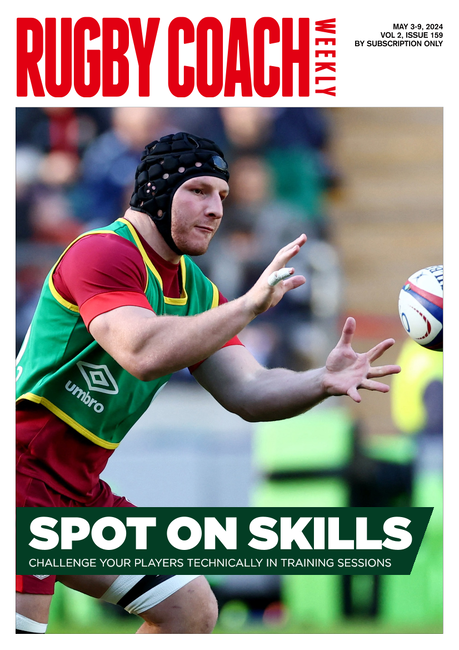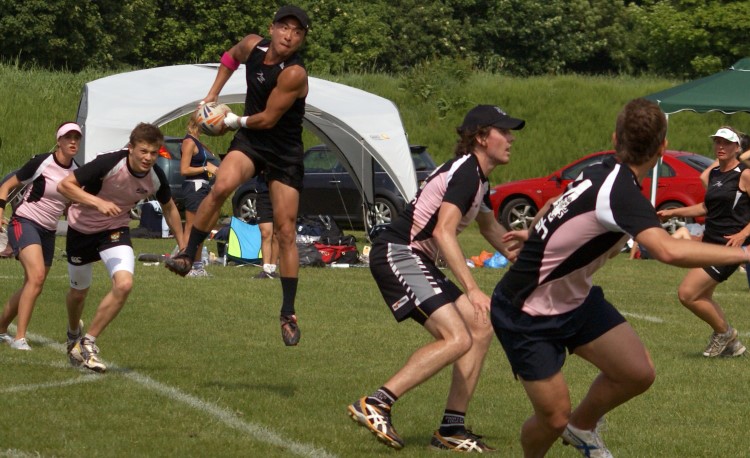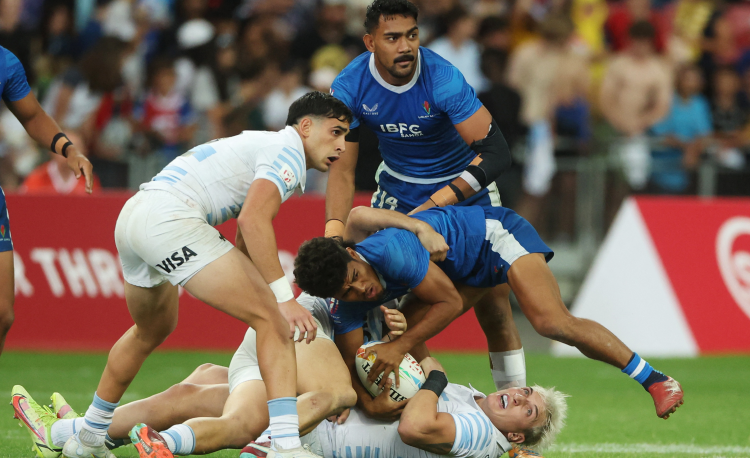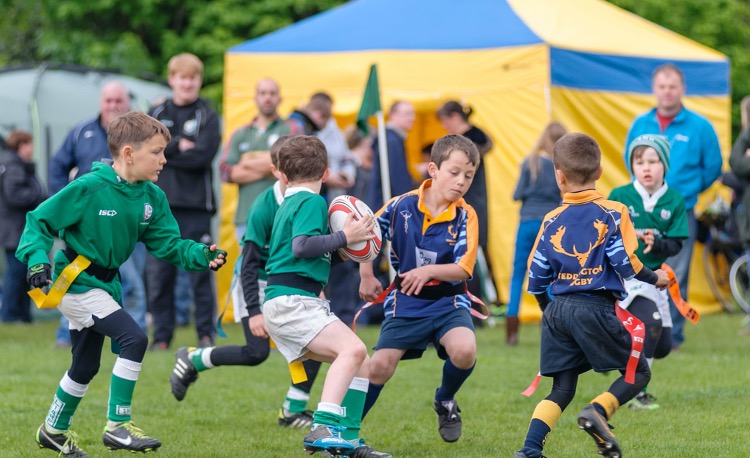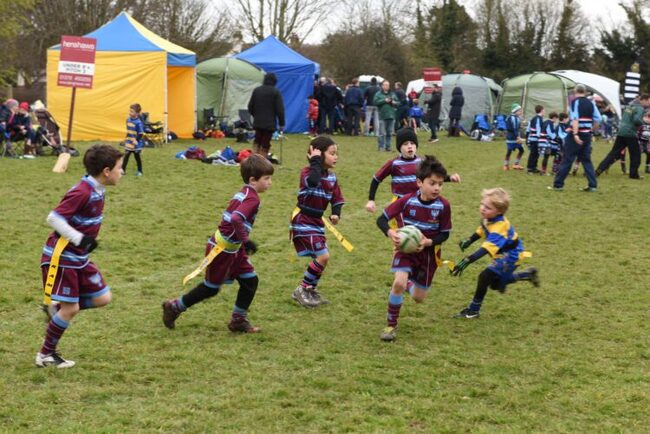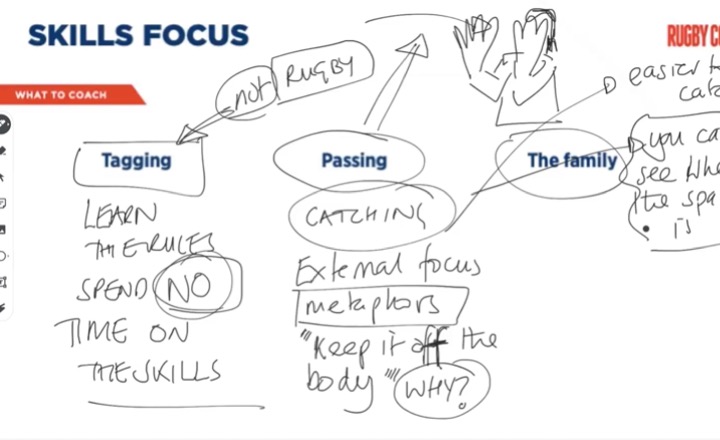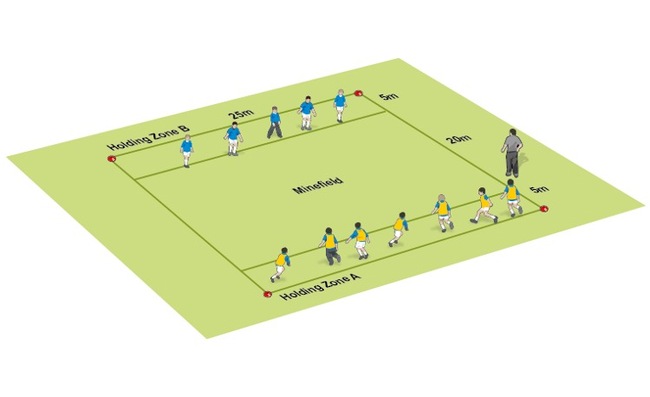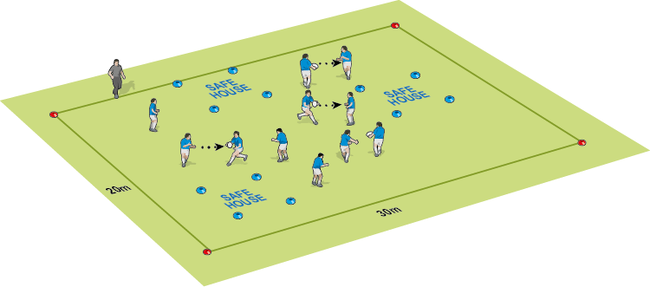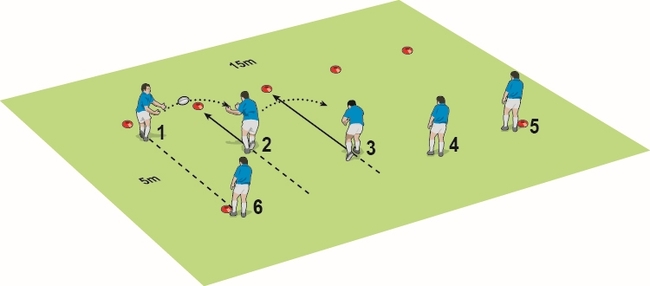You are viewing
1 of your 2 free articles
Set up your rugby sevens defence
Touch Tag Sevensby Dan Cottrell
Several yeats ago I interviewed Colin Hillman, former Welsh Sevens coach. He gave me some excellent insights into the current sevens thinking at the top level, with implications for all teams.
Always work on your defence first
We have the luxury of some of the best rugby players in the world. They have pace, great stepping ability and of course can catch and pass. In the little time available for tournaments we concentrate on getting the defence right first. Here's the system we use:
Sweeper system
We always work with a sweeper system, where six players play in front of one. The sweeper covers kicks and acts as the last man in defence. However it does mean there is an overload in favour of the attack.
The chain
The key to our defence is: don't get broken through in the middle. In my experience, if a player gets through the middle then the sweeper has little chance of making the tackle, or preventing a try. Either they get "stepped" by the attacker, or there is a 2 v 1 situation.
The defensive line at the front must be disciplined, working like a chain to prevent this happening.
Three man defensive unit
In front of the sweeper, we work in three man defensive units. The player who is defending the ball does not move up unless he has a man either side of him. The three men pressurise the ball carrier together. They do this by squeezing together a little and forcing the ball carrier to make a decision.
In the meantime the other defenders close off the "passing avenues". In effect, they are closing the gate and forcing an error from the attacking team. The aim is to show the attack the space on the outside, between the widest defender and the touchline. In other words, backing your own players to cover the outside break.
No such thing as a static defence
We like to say that if you are standing in defence you are not working. It is constant push, push, push up the field, forcing the other team backwards.
The three man unit pressurises the ball, with the other defenders getting in amongst the attacking team. We want the opposition ball carrier to look up for options to pass and only see your shirts.
In the picture you can see the 3 man defence moving up as an arc, with the ball being surrounded by defenders. One of the most effective examples of this I saw was in the Middlesex Sevens when the rugby league side, the Bradford Bulls, literally walked up and across the pitch in defence – all the time maintaining a solid wall of defence.
3 man and arc defence to cut down the attacking options
A great game to practise your three man defence
Using half the width of the pitch, match 3 defenders against 5 attackers. The defenders have to shift across and up the field and pressurise for 2 minutes. It is amazing how successful they are if they follow the “chain” principles.
Increase the width of the pitch as the defence becomes more successful.
Get Colin Hillman's Expert Guide to Sevens for more tips on how to coach sevens rugby.
Always work on your defence first
We have the luxury of some of the best rugby players in the world. They have pace, great stepping ability and of course can catch and pass. In the little time available for tournaments we concentrate on getting the defence right first. Here's the system we use:
Sweeper system
We always work with a sweeper system, where six players play in front of one. The sweeper covers kicks and acts as the last man in defence. However it does mean there is an overload in favour of the attack.
The chain
The key to our defence is: don't get broken through in the middle. In my experience, if a player gets through the middle then the sweeper has little chance of making the tackle, or preventing a try. Either they get "stepped" by the attacker, or there is a 2 v 1 situation.
The defensive line at the front must be disciplined, working like a chain to prevent this happening.
Three man defensive unit
In front of the sweeper, we work in three man defensive units. The player who is defending the ball does not move up unless he has a man either side of him. The three men pressurise the ball carrier together. They do this by squeezing together a little and forcing the ball carrier to make a decision.
In the meantime the other defenders close off the "passing avenues". In effect, they are closing the gate and forcing an error from the attacking team. The aim is to show the attack the space on the outside, between the widest defender and the touchline. In other words, backing your own players to cover the outside break.
No such thing as a static defence
We like to say that if you are standing in defence you are not working. It is constant push, push, push up the field, forcing the other team backwards.
The three man unit pressurises the ball, with the other defenders getting in amongst the attacking team. We want the opposition ball carrier to look up for options to pass and only see your shirts.
In the picture you can see the 3 man defence moving up as an arc, with the ball being surrounded by defenders. One of the most effective examples of this I saw was in the Middlesex Sevens when the rugby league side, the Bradford Bulls, literally walked up and across the pitch in defence – all the time maintaining a solid wall of defence.
3 man and arc defence to cut down the attacking options

A great game to practise your three man defence
Using half the width of the pitch, match 3 defenders against 5 attackers. The defenders have to shift across and up the field and pressurise for 2 minutes. It is amazing how successful they are if they follow the “chain” principles.
Increase the width of the pitch as the defence becomes more successful.
Get Colin Hillman's Expert Guide to Sevens for more tips on how to coach sevens rugby.
Newsletter Sign Up
Coaches Testimonials

Gerald Kearney, Downtown Las Vegas Soccer Club

Paul Butler, Florida, USA

Rick Shields, Springboro, USA

Tony Green, Pierrefonds Titans, Quebec, Canada
Subscribe Today
Be a more effective, more successful rugby coach
In a recent survey 89% of subscribers said Rugby Coach Weekly makes them more confident, 91% said Rugby Coach Weekly makes them a more effective coach and 93% said Rugby Coach Weekly makes them more inspired.
Get Weekly Inspiration
All the latest techniques and approaches
Rugby Coach Weekly offers proven and easy to use rugby drills, coaching sessions, practice plans, small-sided games, warm-ups, training tips and advice.
We've been at the cutting edge of rugby coaching since we launched in 2005, creating resources for the grassroots youth coach, following best practice from around the world and insights from the professional game.
More from us
© 2023 Rugby Coach Weekly
Part of Green Star Media Ltd. Company number: 3008779
We use cookies so we can provide you with the best online experience. By continuing to browse this site you are agreeing to our use of cookies. Click on the banner to find out more.


